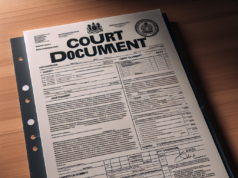
In recent years, mediation services have witnessed an unprecedented surge, fundamentally transforming the landscape of conflict resolution. As society grapples with an increasing array of disputes—ranging from interpersonal disagreements to complex corporate conflicts—mediation has emerged as a preferred alternative to traditional litigation. This article delves into the factors driving this trend, the evolution of mediation practices, and the implications for the future of conflict resolution.
Understanding the Unprecedented Surge in Mediation Services for Conflict Resolution
The rise in mediation services can be attributed to a growing recognition of the benefits they offer over conventional dispute resolution methods. Mediation provides a platform for open dialogue, allowing parties to express their concerns and work collaboratively towards mutually beneficial solutions. This shift in perspective is particularly evident in various sectors, including family law, workplace disputes, and international conflicts, where the emphasis on preserving relationships and fostering understanding has gained prominence. As more individuals and organizations seek efficient, cost-effective, and less adversarial means of resolving disputes, mediation has solidified its position as a vital tool in the conflict resolution arsenal.
The Evolution of Mediation: Historical Context and Recent Developments
Mediation has roots that trace back thousands of years, with early practices evident in ancient cultures where community leaders facilitated discussions among disputing parties. However, the modern mediation movement gained momentum in the late 20th century, particularly in the United States, where it was embraced as a viable alternative to the court system. Recent developments have further refined mediation practices, incorporating diverse methodologies and approaches tailored to specific contexts. The establishment of professional organizations and standardized training programs has also contributed to the credibility and effectiveness of mediation, ensuring that practitioners are equipped with the skills necessary to navigate complex emotional and legal landscapes.
Key Factors Driving the Increased Demand for Mediation Services Today
Several key factors have converged to drive the increased demand for mediation services in contemporary society. Firstly, the rising costs and lengthy timelines associated with litigation have prompted individuals and organizations to seek more efficient alternatives. Additionally, the growing awareness of the psychological and emotional toll of adversarial legal processes has led many to prefer mediation’s collaborative approach. Furthermore, societal shifts towards valuing emotional intelligence and conflict resolution skills have made mediation an attractive option for those looking to resolve disputes amicably. The increasing complexity of disputes in a globalized world also necessitates flexible and adaptive resolution mechanisms, further bolstering the appeal of mediation.
The Role of Technology in Enhancing Mediation Practices and Accessibility
Technology has played a pivotal role in enhancing the accessibility and effectiveness of mediation services. The advent of online mediation platforms has democratized access to conflict resolution, allowing parties to engage in mediation from the comfort of their homes, regardless of geographical barriers. Virtual mediation sessions have become increasingly common, especially in the wake of the COVID-19 pandemic, which necessitated remote interactions. Additionally, technology facilitates the use of advanced tools such as artificial intelligence and data analytics to streamline the mediation process, helping practitioners identify patterns and tailor strategies to the unique needs of each case. This technological integration not only improves efficiency but also broadens the reach of mediation services to underserved populations.
Comparative Analysis: Mediation Versus Traditional Conflict Resolution Methods
When comparing mediation to traditional conflict resolution methods, several distinct advantages emerge. Unlike litigation, which often fosters a win-lose dynamic, mediation promotes a win-win outcome by encouraging collaboration and understanding. This approach not only preserves relationships but also empowers parties to take ownership of the resolution process. Furthermore, mediation tends to be less formal, allowing for greater flexibility in terms of procedures and outcomes. The confidentiality inherent in mediation also stands in stark contrast to the public nature of court proceedings, providing parties with a safe space to discuss sensitive issues without fear of public scrutiny. As a result, mediation is increasingly viewed as a more humane and constructive approach to conflict resolution.
Future Implications: How Mediation Services Are Shaping Conflict Resolution Trends
The ongoing surge in mediation services is likely to have profound implications for the future of conflict resolution. As more individuals and organizations embrace mediation, it is expected that the practice will continue to evolve, incorporating innovative techniques and methodologies. The integration of technology will likely expand, making mediation even more accessible and efficient. Additionally, as mediation gains traction in various sectors, there may be a corresponding shift in legal education and training, with a greater emphasis on conflict resolution skills. Ultimately, the rise of mediation services signifies a broader cultural shift towards valuing collaboration, understanding, and restorative justice in resolving disputes.
In conclusion, the unprecedented surge in mediation services represents a significant transformation in the conflict resolution landscape. Driven by a combination of economic, social, and technological factors, mediation offers a compelling alternative to traditional litigation, emphasizing collaboration and mutual understanding. As this trend continues to evolve, it holds the potential to reshape not only how disputes are resolved but also how society approaches conflict as a whole. The future of mediation is bright, promising a more harmonious and constructive path for resolving conflicts in an increasingly complex world.


























